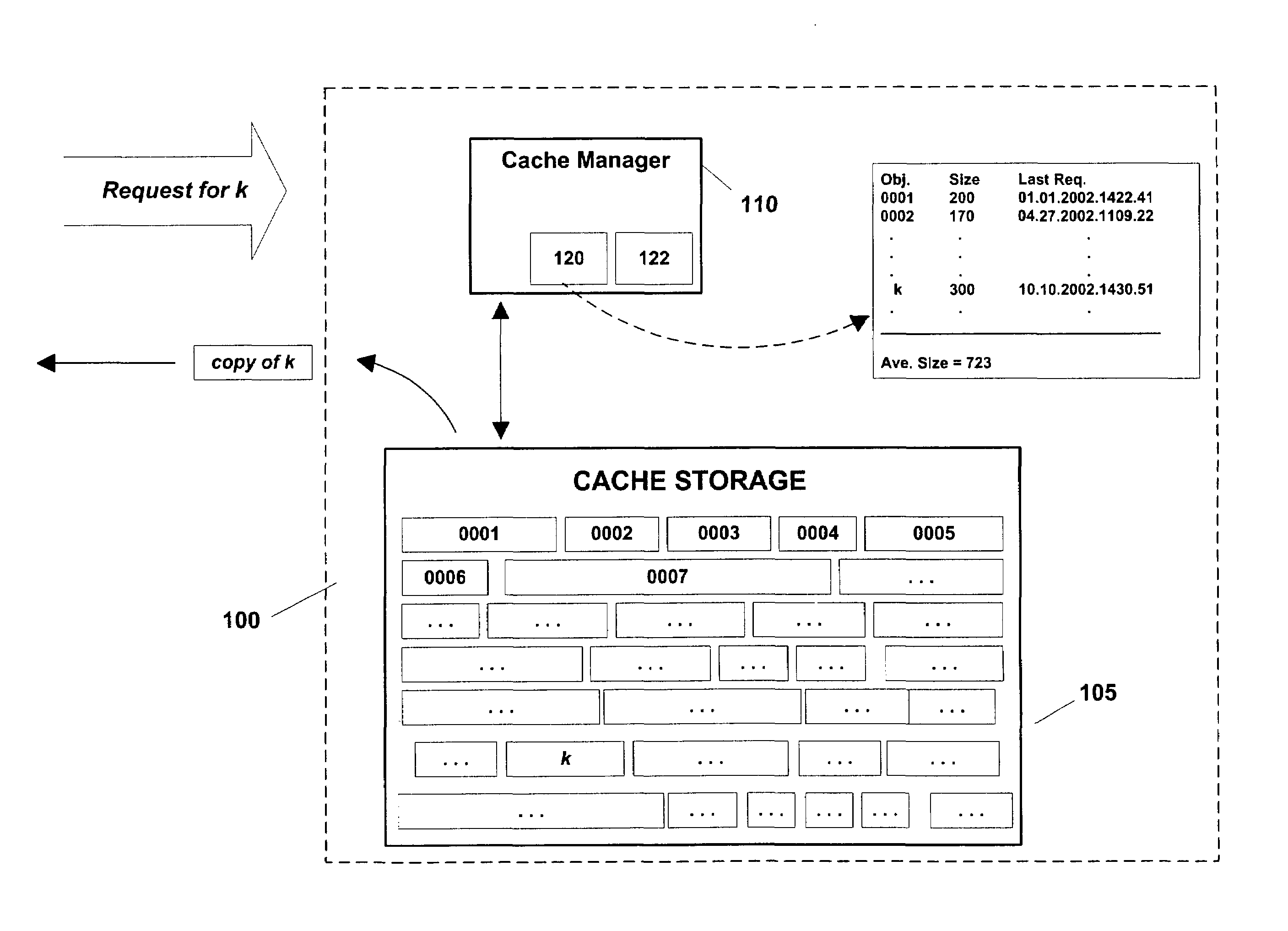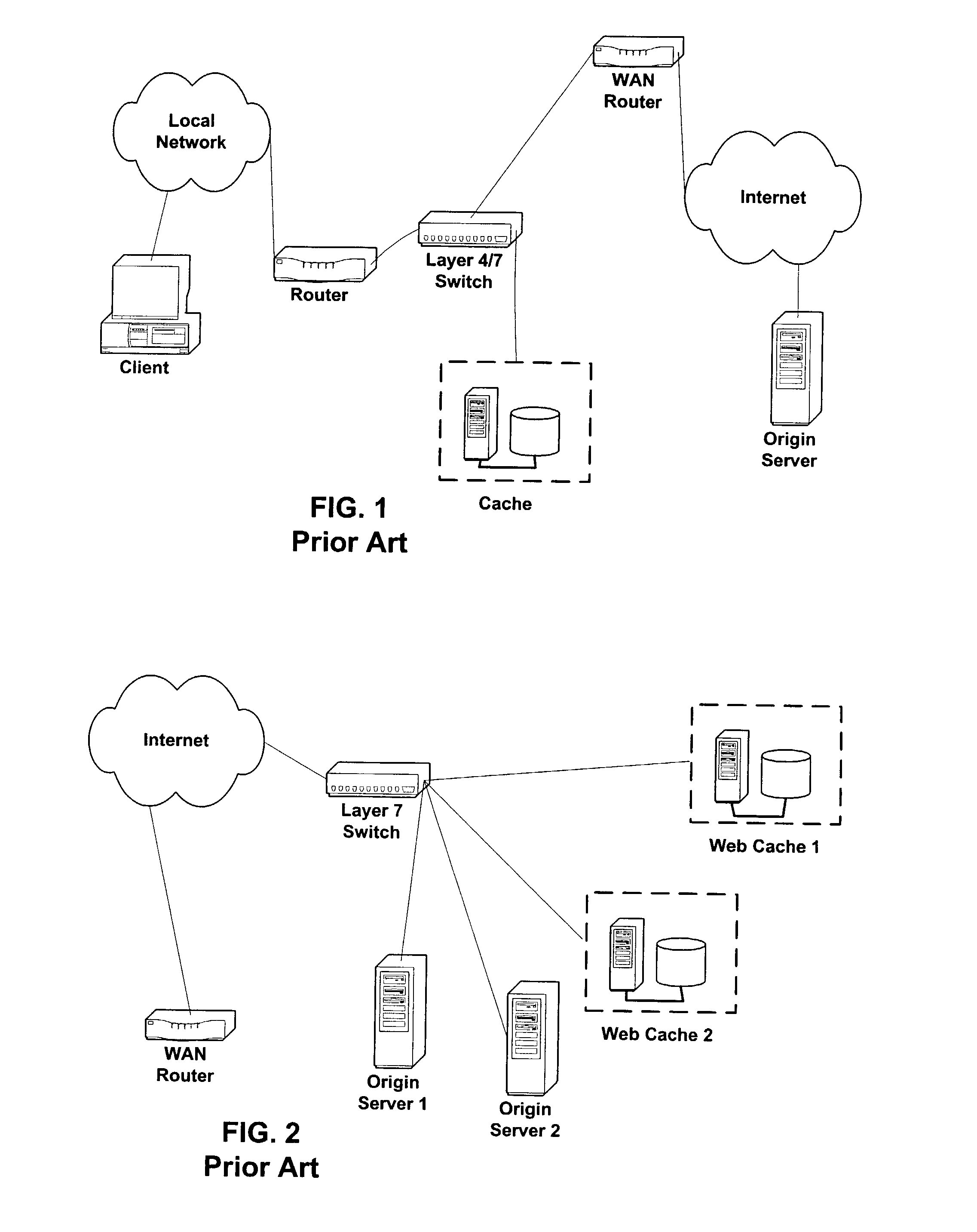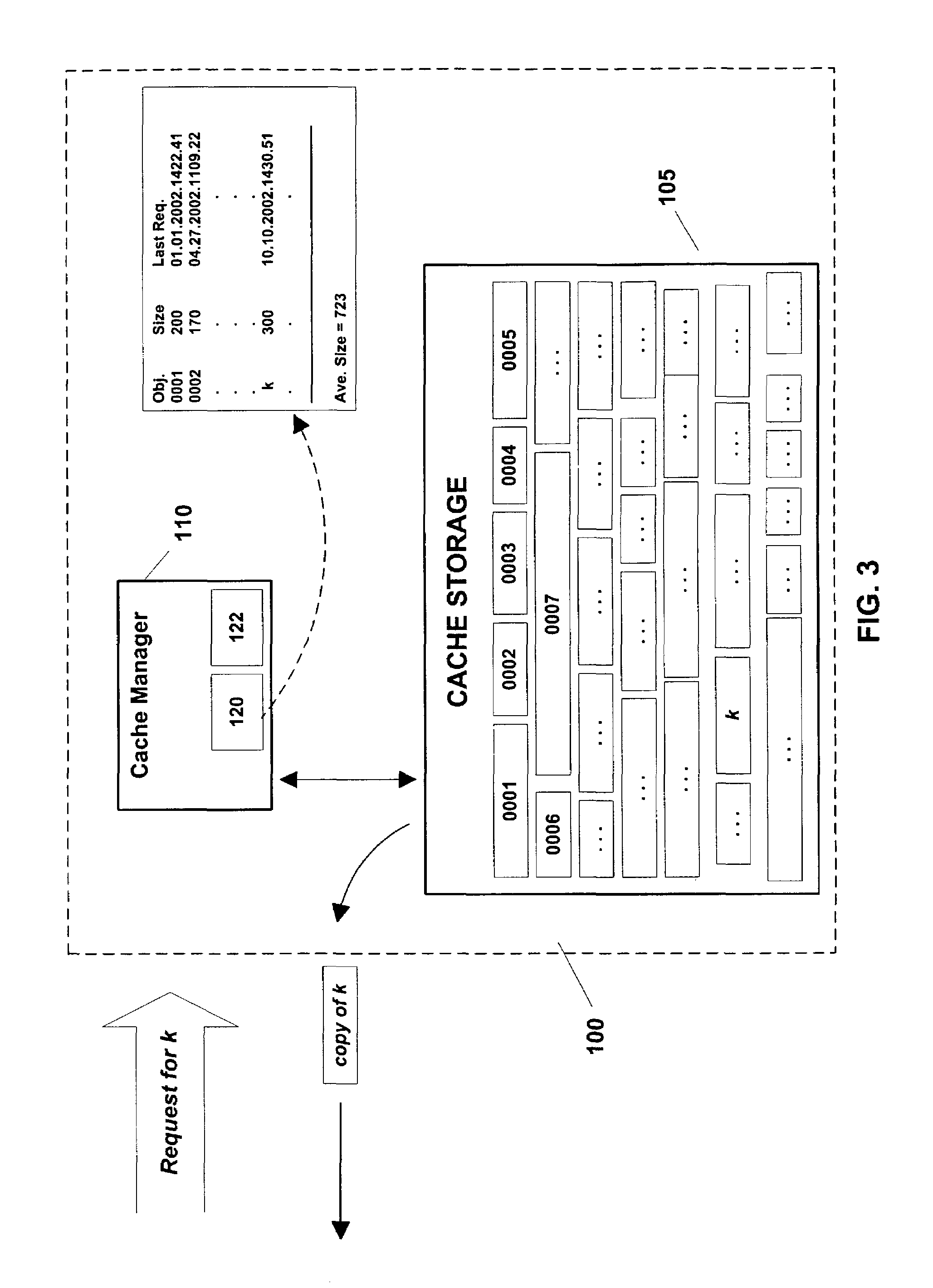Memory admission control based on object size or request frequency
a technology of object size and request frequency, applied in the field of selective admission of data into memory, can solve the problems of substantial latency between user request for content and user receipt of content, web traffic has been growing at a much faster pace, and the growth of the web places ever-increasing demands on the network backbone and other facilities that form the web, so as to improve the operation of the memory devi
- Summary
- Abstract
- Description
- Claims
- Application Information
AI Technical Summary
Benefits of technology
Problems solved by technology
Method used
Image
Examples
Embodiment Construction
[0022]The present invention implements admission control to selectively admit data into a memory. As used herein, and unless otherwise specified, “memory” includes both non-volatile data storage (e.g., hard disk drives, optical drives, etc.) and volatile memory (e.g., RAM). The invention may advantageously be implemented in a web cache, and will be described using a web cache as an example. The invention is not limited to such implementation, however. The invention may be used to improve memory management in client side caching, or in general data caching that may be unrelated to Internet content. In that vein, use of the word “caching” in this description to indicate storage of an object in a web cache should not be construed as limiting the invention to data storage environments previously referred to as caches.
[0023]One metric often used to evaluate performance of web caches is the Hit Ratio:
[0024]HitRatio=requestssuccessfullyservedtotalrequests
Caching memory systems in c...
PUM
 Login to View More
Login to View More Abstract
Description
Claims
Application Information
 Login to View More
Login to View More - R&D
- Intellectual Property
- Life Sciences
- Materials
- Tech Scout
- Unparalleled Data Quality
- Higher Quality Content
- 60% Fewer Hallucinations
Browse by: Latest US Patents, China's latest patents, Technical Efficacy Thesaurus, Application Domain, Technology Topic, Popular Technical Reports.
© 2025 PatSnap. All rights reserved.Legal|Privacy policy|Modern Slavery Act Transparency Statement|Sitemap|About US| Contact US: help@patsnap.com



